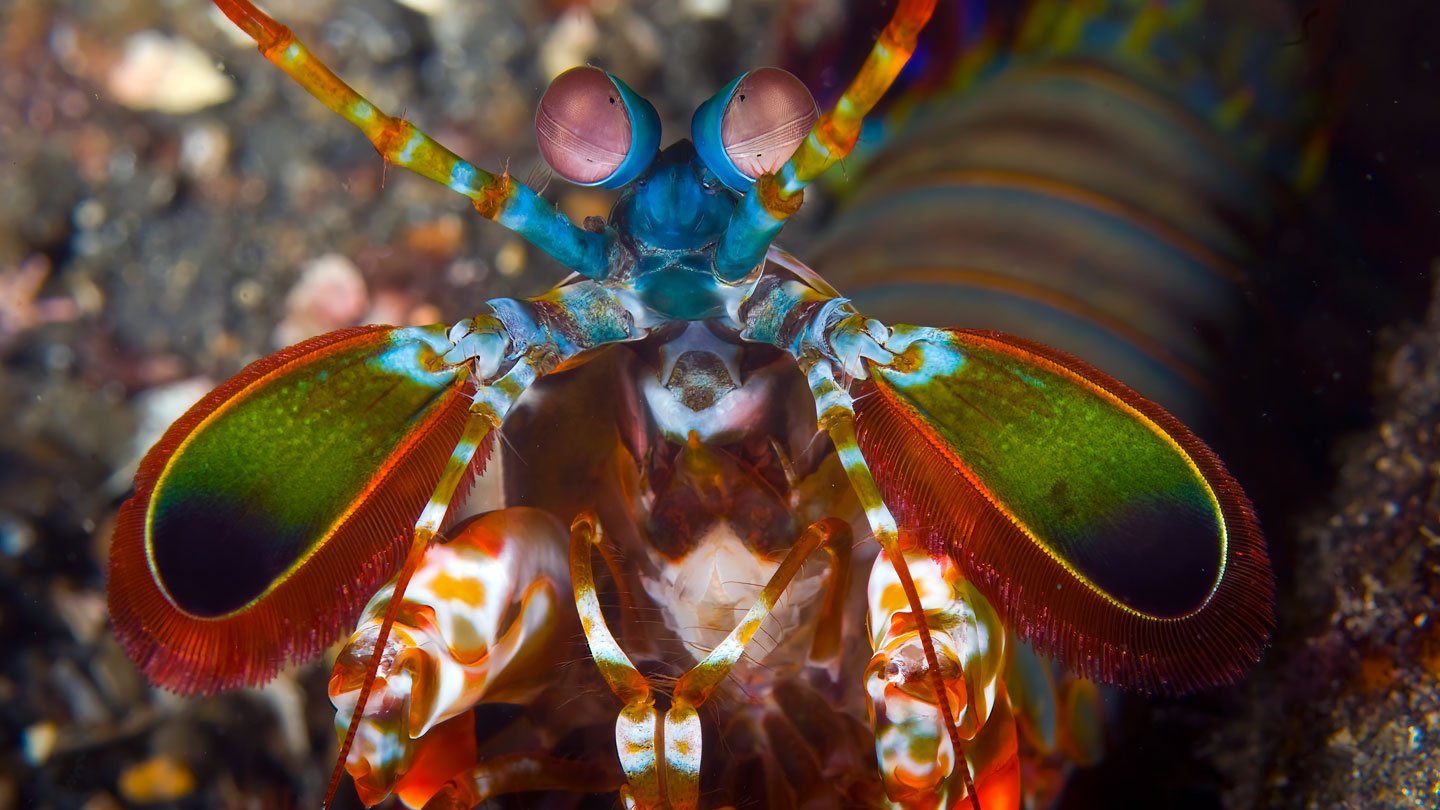Mantis shrimp are famous for their ultrafast, powerful punches used to dispatch prey. They can land volley after shell-splintering volley, without major injury to their own nerves or flesh.
That’s because the exoskeleton of their club-like forelimbs is built to filter out the most damaging pressure waves caused by a strike, researchers report in the Feb. 7 Science.
Though small enough to fit in your hand, peacock mantis shrimp (Odontodactylus scyllarus) strike so fast that they create imploding bubbles. The impact and implosions work in concert to inflict forces that can exceed 1,000 times the mantis shrimp’s body weight. Yet, the predators unleash this power repeatedly without injuring themselves or breaking their clubs.
Scientists thought this resilience might come directly from the architecture within the club’s armor. There, layers of mineral-hardened chitin — a long chain of sugars that is the primary component of arthropod exoskeletons — rest above deeper stacks of chitin bundles. Those deeper layers are rotated slightly with respect to the layers above and below, much like a stack of paper that’s been twisted, creating a helix-like corkscrewing shape called a Bouligand structure.
It was suspected that this design might act as a shield of sorts, manipulating how high energy waves moved through it. But it hadn’t been thoroughly experimentally tested.
“It was mostly theoretical calculations,” says Hortense Le Ferrand, a material scientist and engineer at Nanyang Technological University in Singapore who was not involved with the study. Some bioengineers, she says, note that “there was not really any proof of it … a lot of negative doubt.”
So Horacio Espinosa, an engineer at Northwestern University in Evanston, Ill., and his colleagues systematically tested the idea in the lab. To mimic the pressure waves experienced by the mantis shrimp, researchers fired laser pulses at aluminum-coated cross sections of the club exoskeleton, causing them to heat up and rapidly expand. They then measured how the high-energy waves created by that expansion moved through the material.
The experiments show that the mineralized outer layers control the spread of tiny cracks from the strike impact itself, while the deeper helix-like layers can dissipate or neutralize the highest energy waves. That “prevents shear waves from damaging soft tissue within the club,” Espinosa says.
The helix-like structure inside the club appears to be a natural version of engineered materials designed to manipulate the propagation of sound waves. Such materials are traditionally thought of as artificial, says Federico Bosia, a physicist at the Polytechnic University of Turin in Italy.
This “adds to the growing body of evidence that shows that they also naturally appear in biological systems, where they have developed through evolution for wave and vibration control purposes,” Bosia says. The wing scales of some moths also have wave dampening properties, for instance, absorbing sound waves as a form of acoustic camouflage against their bat predators’ echolocation.
The exoskeleton architecture could inspire materials such as impact-resistant armor, protective coatings and aerospace structures, Espinosa says.
Materials scientist David Kisailus of the University of California, Irvine already has been developing applications for the helix structure inside the mantis shrimp’s club, using the design to enhance the toughness of airplane wings, wind turbine blades and hockey sticks. Kisailus studies other species with promise for inspiring high-performance materials and wagers the new findings are the tip of the iceberg.
There are millions of species that have had to adapt to ever-changing conditions, Kisailus says. “I know that there are many, many blueprints out there just waiting to be revealed in nature’s plethora of organisms.”
Source link














Leave a Reply